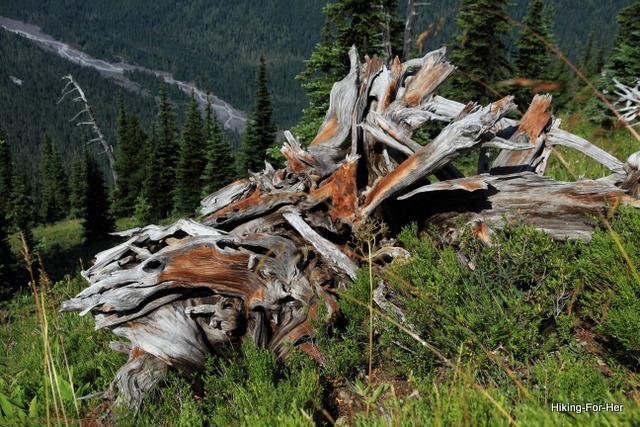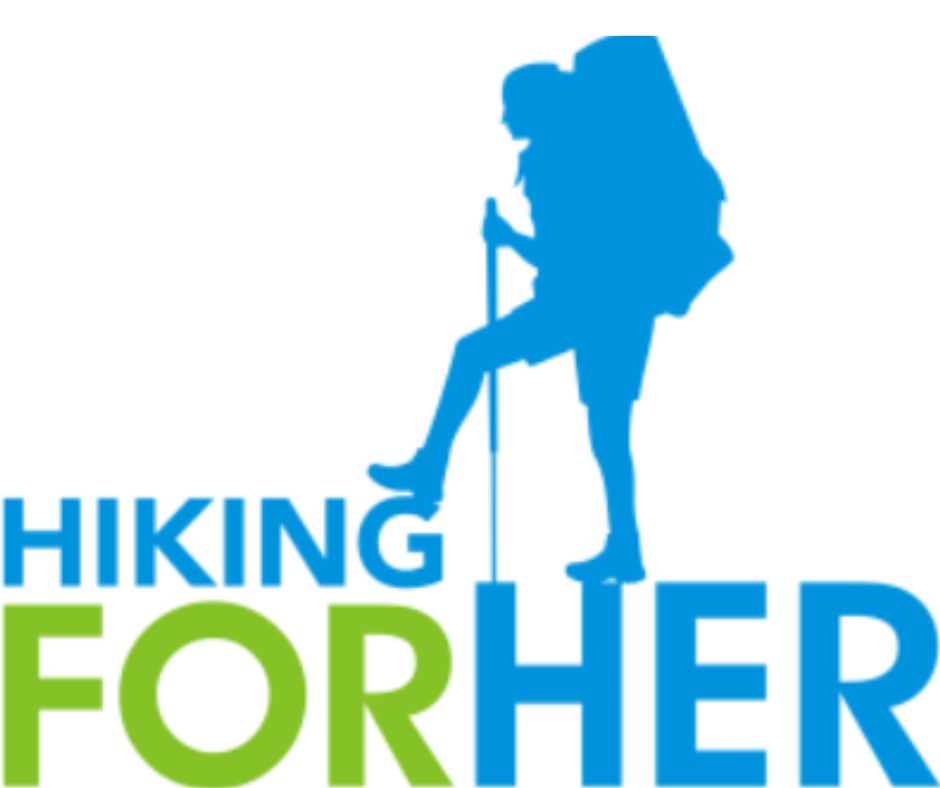Muscle Injury Prevention
Tips For Hikers
By Diane Spicer
Muscle injury prevention is of high importance on a hiker's list.
- Without cooperating, fully functioning muscles, you ain't goin' nowhere!
So let's take a peek at these contracting workhorses, named because they resemble the rounded bodies of mice under the skin during contractions ("mus" for "mouse").
- Muscles are attached to bones by tendons.
- Bones are attached to each other by ligaments.
- They are both wrapped up in a tidy compartment by more soft tissue: fascia (think of it as strong, efficient, versatile packing material - the connective tissue of the body).
Why is that important
to you as a hiker?
Maybe it's not, until something unpleasant pops up, like pain or strain.
- Because any of these - bone, muscle, soft tissue - can be injured or stressed during a hike.
Ignoring an injury or a warning sign such as inflammation or pain is asking for big trouble.
You can ignore it for a while, but would you ignore a fire in your house?
- Best to deal with it right away, before you lose the entire structure!
Giving your body plenty of high quality protein, pure water, good fats, complex carbohydrates, and other nutrients will rebuild tissue and keep you hiking for decades.
That's something you can make a point of doing on a daily basis, right?
But wait!
There's more!
There's even more smart moves to make your hiker's body strong and resilient, and I know you aren't going to want to hear it: take good care of your muscles by exercising daily and stretching.
- Ugh! Who has time?
- Who wants to walk when it's rainy or hot or snowy or windy?
- Too tired to do all this stuff...
I know - I'm right there with you!
The only solution is to visualize yourself on a hiking trail, feeling weak and tired and winded while your hiking companions are way ahead of you.
That doesn't feel good, does it?
Solo hikers take note
If you're a solo hiker, you have an even bigger commitment to stay strong and trail conditioned because you only have yourself to rely upon when the going gets tough:
- unexpected elevation loss followed by a big gain,
- severe weather conditions,
- heat extremes,
- an injury or trauma,
- or any of a number of unpredictable trail events.
So let's get to the muscle injury prevention stuff, shall we?
Muscle injury prevention:
let's name names
I'm not going to preach, but hopefully I can persuade you to take your leg and thigh muscles seriously.
Muscle injury prevention is a much better route than injury rehabilitation!
Let me quickly introduce you to those muscles right now, beginning at your ankles.
Leg muscles
Your lower leg between your knee and ankle is technically referred to as your leg (tibia and fibula bones), with your thigh (femur bone) being - well, you know where it is!
Leg muscles are divided by fascia into compartments, named for where they are on the bones: facing front (anterior), on the side (lateral), or at the back of the leg (posterior).
These muscles need to move your foot - think about this! Every single step you take along a hiking trail requires these muscles to work.
At the end of every hike, I send a silent "thanks" to these hard
working muscles, and I promise them a nice long stretch once I get my
boots off. It's only fair!
Leg muscles have great names:
- tibialis,
- peroneus,
- gastrocnemius,
- soleus,
- plantaris,
- popliteus.
The strongest tendon in your body, called the calcaneal or Achilles tendon, anchors some of these muscles to the calcaneal bone of the ankle.
In other words, it attaches the soft muscle fibers to the bony structure which is part of building the complex structure you walk on: your foot.
Thigh muscles
Now let's move up to your thigh muscles.
These are impressive for their size and power.
- They have the responsibility for moving your heavy thigh bone (femur) and for moving the knee.
Again, visualize yourself striding up the trail - these muscles are working constantly to move you along.
They have great names, too, and are arranged in compartments according to how close or far away from the surface of the thigh they are:
- vastus lateralis,
- biceps femoris,
- adductor brevis for example.
They need the same tender loving care as your "lower leg" muscles.
Sore muscles after a hike?
When your muscles feel sore after a hike, it's because they were busy contracting and relaxing with each step you took.
They need a bit of extra attention as they recover from their exertion, so be sure that you:
- drink more water
- eat lean meat/fish or quinoa or tofu or rice & beans as readily available protein sources to rebuild the muscle cells
- invest time in some gentle stretches
Here are the best tips for sore muscles after a hike:
Just remember, it's a good sore, because it reminds you of the great hike you just completed!
Except when it's not...
Shin splints
are a warning
Shin splints is the name given to pain located on the front of the leg, along the big leg bone (tibia) you can feel quite easily because there's not a lot of "meat" (muscle) on that part of the bone.
If you've ever been kicked in the shins, you'll know exactly where it is. That's why soccer players wear shin guards!
Shin pain is a red flag, warning you that you've got to pay attention to the bone (stress fracture), the muscles (tendinitis), or the tissues which wrap around the bone (periostitis).
- Note that any word ending with "-itis" refers to inflammation, which could show up not only as pain, but as swelling, redness, heat, or loss of mobility (or all of these, unlucky you!).
Short term inflammation is the body's natural healing cycle, but it can get overblown and cause unintended side effects.
Or it can get stuck in a chronic cycle that's more difficult to resolve.
- Which can also keep you off the trail for months at a time.
Deal with hiking inflammation right away!
"Pulled" muscles
You might have experienced a "pulled" muscle in your thigh.
This unhappy event in your hamstrings (hamstring strain) leads to pain, and may be accompanied by swelling and a pool of blood forming in the tissues (hematoma) if the tendons are pulled off their bony anchor.
Why did it happen?
Lack of stretching and a strength imbalance between these muscles on the back of the thigh, and the quads (quadriceps) on the front of the thigh.
Muscle injury prevention strategies?
- Honor your body with a daily commitment to stretching (yoga classes make it fun).
- Work out several times per week to gain strength in your quads and
hamstrings.
- Avoid quick starts & stops when your muscles aren't fully warmed up.
Daily activity =
happy hiking muscles
So this brings us to the need for daily activity.
If you only hike on the week-ends, or in short hard bursts, you put a lot of stress on your legs and it can show up as shin splints.
Keeping your muscles strong will prevent this - and the only way to keep them strong is to USE them every day!
- The good news is that even a short 20 minute walk every other day will do the trick to prevent muscle injury.
Summing up muscle injury prevention
for hikers
So let's sum it up:
Muscle injury prevention for hikers require:
- regular movement to keep legs and thighs strong and conditioned,
- regular
stretching to avoid trouble on the trail,
- excellent nutrition to give your
body the building blocks it needs to repair damage, and
- a good attitude about investing time in yourself.
Oh, and one more thing: self massage to work out the inevitable sore spots.
And you definitely have my permission to treat yourself to Swedish or deep tissue massage every month!
It's all in the name of muscle injury prevention, right?
- Asking for a "hiker's special" sports massage for your birthday is a great idea ;)
 Muscle injury prevention will guarantee you some time in the back country!
Muscle injury prevention will guarantee you some time in the back country!You want your muscles and ligaments to be juicy and resilient, not dried out like this tree stump!
Staying stretchy and hydrated is a first line tool in the crusade for muscle injury prevention.
If you are committed to beginning (or enhancing) a weekly routine to strengthen your hiking abilities, drop me a line and ask any questions you might have.
I'd be happy to help in brainstorming some muscle injury prevention strategies for you.
Repeat after me:
It's better to be strong than sore!
Home page > Best Hiking Tips >
Muscle Injury Prevention
|
I get emails all the time about what I wear, eat, carry and love to use on the trail. That's
why I provide affiliate links to you: the best gear that I use myself and have seen used by other hikers is instantly
available for your consideration, and the gear company sends a few
pennies per dollar to this reader-supported hiking website. There is no added cost to you! Everyone ends up a winner: Great gear for you, strong gear companies, and more free hiking tips for everyone. Thanks very much for your support. It's warmly and sincerely appreciated. It also helps send these hiking tips to all your virtual trail buddies around the globe. |
 |


